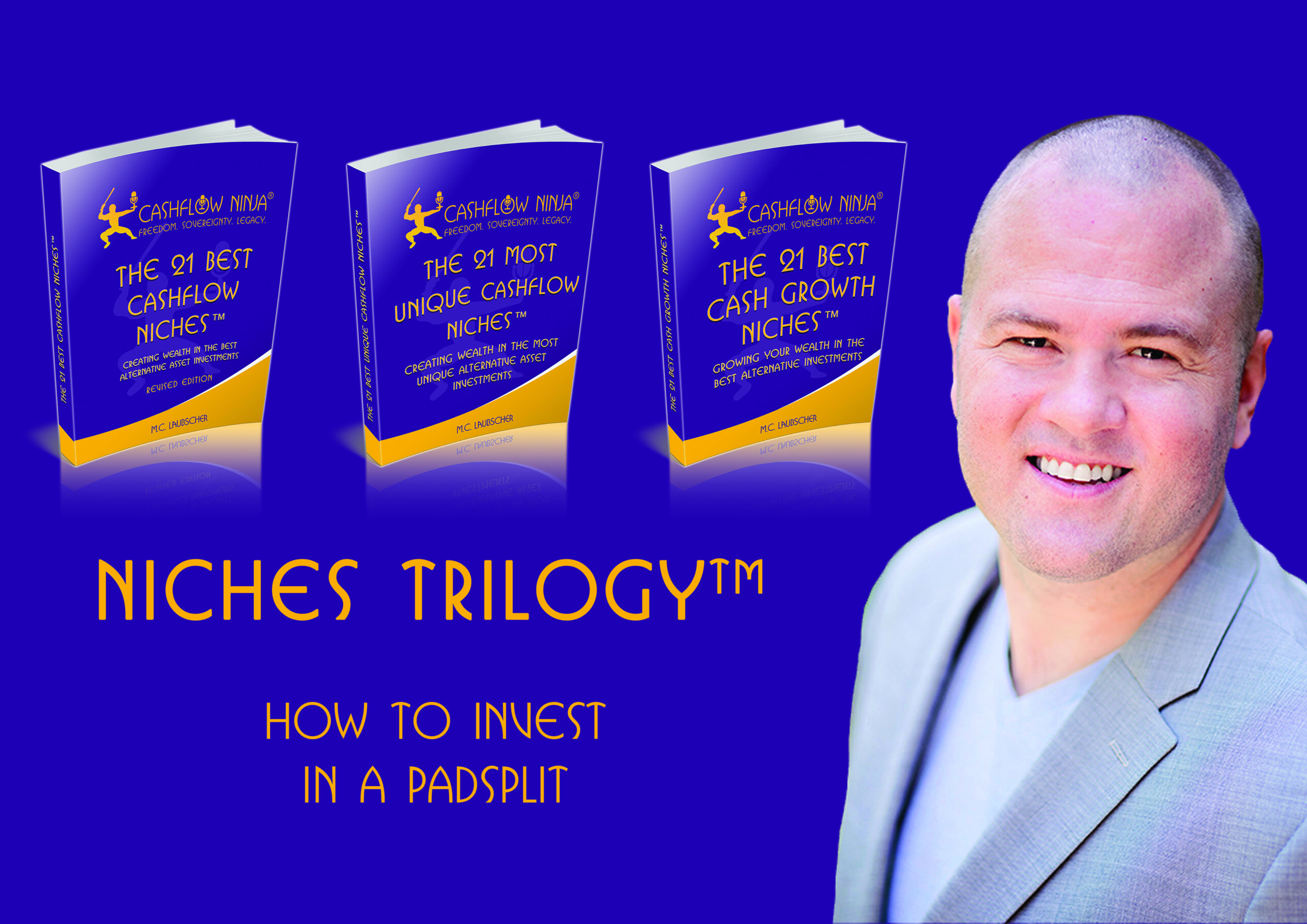
PadSplit is a housing platform that offers affordable and flexible housing solutions by converting single-family homes into shared living spaces. The company aims to address the affordable housing crisis by providing safe, affordable, and convenient housing options for individuals seeking cost-effective accommodations.
Through PadSplit, property owners can rent out individual rooms to tenants, known as “members,” who share common areas such as kitchens, bathrooms, and living spaces. Members pay weekly or monthly rent for their private rooms, including utilities and other amenities.
PadSplit manages the rental process, including property listings, tenant screening, rent collection, and maintenance. This makes it easier for property owners to monetize underutilized space while providing affordable housing options for tenants.
The platform appeals to various demographics, including low-income individuals, students, and young professionals, who benefit from the cost savings and flexibility of shared living arrangements.
Overall, PadSplit aims to leverage technology and innovative housing models to address affordability challenges and provide accessible housing solutions for communities across the United States.
For several reasons, PadSplit presents a compelling strategy in declining economies and those plagued by significant wealth inequality.
In times of economic decline, affordable housing becomes even more critical as individuals face financial challenges. PadSplit’s model provides an innovative solution by offering safe, affordable housing options to those who may struggle to afford traditional rental properties. By converting single-family homes into shared living spaces, PadSplit addresses the pressing need for accessible housing, particularly for low-income individuals and families.
PadSplit’s flexible and adaptable approach to housing allows for scalability and resilience in economic downturns. Shared living arrangements offer cost-effective solutions for tenants and property owners, enabling individuals to weather financial challenges by reducing housing costs while providing landlords with steady rental income.
For property owners, investing in PadSplit offers an opportunity to diversify their income streams, which can be particularly valuable during economic uncertainty. By converting properties into shared living spaces, investors can generate rental income from multiple tenants, reducing reliance on a single source of revenue and mitigating risks associated with vacancies or rent defaults.
PadSplit plays a crucial role in addressing wealth inequality by providing affordable housing options to those who may be marginalized or disadvantaged in the housing market. Shared living arrangements offer a more cost-effective alternative to traditional rentals, making housing more accessible to individuals across income levels. By democratizing access to affordable housing, PadSplit contributes to leveling the playing field and reducing disparities in wealth and opportunity.
In communities grappling with wealth inequality, PadSplit fosters social cohesion and community building by creating shared living environments where individuals from diverse backgrounds can live together. By promoting inclusivity and diversity, PadSplit helps bridge socioeconomic divides and fosters a sense of belonging and mutual support among residents.
PadSplit’s innovative approach to affordable housing addresses pressing societal challenges exacerbated by economic downturns and wealth inequality. PadSplit offers a promising strategy for navigating uncertain economic landscapes while promoting more significant equity and inclusion in housing markets by providing flexible, affordable housing options and fostering community resilience.
Why Invest In A PadSplit?
Investors are drawn to PadSplit for several reasons. Firstly, there’s the potential for high returns. PadSplit allows investors to convert single-family homes into shared living spaces, maximizing rental income by renting out individual rooms to multiple tenants. This approach often yields higher returns compared to traditional rental properties. Additionally, investing in PadSplit allows for the diversification of real estate portfolios. Shared living arrangements cater to a diverse range of tenants, including low-income individuals, students, and young professionals, providing a resilient income stream across various economic conditions. Moreover, PadSplit’s mission to address the affordable housing crisis resonates with socially conscious investors. By providing safe, affordable, and convenient housing options, investors can improve housing affordability and accessibility for underserved populations. The innovative housing model also offers scalability potential, enabling investors to expand their portfolios by acquiring and converting single-family homes rapidly. Finally, PadSplit leverages technology and data-driven solutions to streamline the rental process and optimize property performance. This not only reduces administrative burdens but also maximizes returns for investors. Overall, investing in PadSplit presents a compelling opportunity for investors to achieve financial returns while positively impacting communities needing affordable housing options.
PadSplit Ecosystem
The PadSplit ecosystem offers a housing model designed to tackle affordable housing issues by creating shared living spaces across a network of single-family homes or multi-unit properties.
Property Owners are individuals or entities who own residential properties and opt to participate in the PadSplit program. They renovate their properties to convert them into shared living spaces, accommodating multiple tenants with private bedrooms and shared common areas.
Tenants are individuals in search of affordable housing solutions to become tenants within PadSplit properties. They rent private bedrooms within these spaces and share common areas like kitchens, bathrooms, and living rooms with fellow tenants. Rent is typically paid weekly or monthly, often inclusive of utilities and additional amenities.
The PadSplit platform serves as the central hub linking property owners and tenants. It provides essential tools. Property owners can list available units, manage tenant applications, and handle rent collection. Tenants, on the other hand, utilize the platform to search for available rooms, submit applications, and communicate with property owners.
Property management companies or individual landlords oversee the day-to-day operations of PadSplit properties. Their responsibilities encompass property maintenance, tenant relations, rent collection, and ensuring compliance with local housing regulations.
PadSplit fosters a sense of community among its tenants through various supportive mechanisms. These may include organizing social events, facilitating access to resources such as job training or financial literacy programs, and providing assistance with housing-related issues.
PadSplit operates within the regulatory framework of the housing market, adhering to local laws and regulations governing rental properties, shared housing arrangements, and tenant-landlord relationships. This involves compliance with safety standards, zoning requirements, and tenant rights laws.
Expansion and Partnerships: PadSplit is dedicated to expanding its network of properties and partnerships to broaden access to affordable housing options. This often entails collaboration with local governments, nonprofit organizations, and community stakeholders to identify suitable properties, secure funding, and implement supportive services for tenants.
Overall, the PadSplit ecosystem presents a scalable and innovative solution to affordable housing challenges by leveraging existing residential properties and transforming them into shared living spaces. This approach offers affordability, flexibility, and a sense of community for tenants, addressing critical housing needs in various communities.
How To Generate Income
Investors can generate income in PadSplit through various channels. The primary source of income is from room rentals, where individual rooms within a property are rented out to tenants, each paying monthly rent. Maximizing tenant occupancy ensures consistent income through effective marketing, tenant screening, and property management practices. Some PadSplit properties may also offer shared amenities, allowing investors to charge additional fees to access these spaces. Utility reimbursements can also contribute to income, with investors passing utility costs to tenants based on usage or a fixed fee. Value-added services such as cleaning, laundry, or internet access can be offered for an additional fee, catering to tenant preferences while generating supplementary income. Securing long-term leases with tenants provides stability and reduces turnover, while property appreciation over time contributes to long-term wealth accumulation. Overall, effectively managing property operations, optimizing tenant occupancy, and leveraging value-added services are essential for maximizing the income potential of PadSplit properties.
How To Lose Money
Investing in PadSplit properties carries various risks that could lead to financial losses for investors. Firstly, high tenant turnover or extended vacancies can result in income loss if rooms remain unoccupied for prolonged periods, putting strain on investors to attract new tenants promptly. Additionally, investors must budget for unexpected maintenance and repair costs to keep PadSplit properties in good condition, as unforeseen expenses like plumbing issues or appliance failures can impact their finances significantly. Moreover, investing in areas with a saturated market for shared living spaces may lead to decreased demand, lower occupancy rates, and reduced rental income, diminishing investors’ returns. Furthermore, compliance with local regulations and zoning ordinances governing shared living arrangements is crucial to avoid fines, penalties, or legal liabilities. Economic downturns or recessions can also pose challenges, affecting tenants’ ability to pay rent and potentially leading to increased delinquencies or defaults. Finally, changes in the local real estate market or neighborhood conditions could result in property depreciation over time, impacting investors’ returns if they need to sell the property at a loss or refinance under unfavorable terms. Overall, thorough due diligence, adequate reserves, and effective property management practices are essential for investors to mitigate these risks effectively and protect their investments in PadSplit properties.
Positives & Negatives Of A PadSplit
Positives:
- Higher Rental Income: PadSplit properties typically generate higher rental income than traditional single-family rentals because multiple tenants rent individual rooms within the same property.
- Diversification: Investing in PadSplit properties allows investors to diversify their real estate portfolios by tapping into the growing market for shared living spaces, providing a resilient income stream across various economic conditions.
- Social Impact: PadSplit’s mission to address the affordable housing crisis resonates with socially conscious investors. It offers an opportunity to make a positive impact on their communities by providing safe, affordable housing options.
- Scalability: PadSplit’s innovative housing model offers scalability potential. It allows investors to rapidly expand their portfolios by acquiring and converting single-family homes into shared living spaces, capitalizing on market demand for affordable housing.
- Technology and Innovation: PadSplit leverages technology and data-driven solutions to streamline the rental process, enhance operational efficiency, and optimize property performance, providing investors with tools to manage their properties more effectively.
Negatives:
- Tenant Turnover: High tenant turnover or prolonged vacancies can lead to income loss if rooms remain unoccupied for extended periods, impacting investors’ rental income.
- Maintenance Costs: Investors are responsible for maintaining PadSplit properties, and unexpected maintenance or repair costs can strain their finances if not adequately prepared.
- Market Saturation: Investing in areas with a saturated market for shared living spaces may result in decreased demand, lower occupancy rates, and reduced rental income, diminishing investors’ returns.
- Regulatory Risks: Compliance with local regulations governing shared living arrangements is essential to avoid fines, penalties, or legal liabilities, adding to investors’ financial burdens.
- Economic Downturns: Economic downturns or recessions can affect tenants’ ability to pay rent, leading to increased delinquencies or defaults, impacting investors’ rental income and financial stability.
Investment Opportunity Filter™
The Investment Opportunity Filter™ evaluates an investment opportunity based on cashflow, tax benefits, appreciation, and the leverage it provides.
A PadSplit score a 4/4 with The Investment Opportunity Filter™.
A PadSplit provide great cashflow, have great tax benefits, and can increase in value significantly through management and operations. You can also leverage the skill sets, capabilities, networks, and capital of others investing in PadSplit.
Subscribe To Our Weekly Newsletter:
The Wealth Dojo: https://subscribe.wealthdojo.ai/
Download all the Niches Trilogy Books:
The 21 Best Cashflow Niches
Digital: https://www.
Audio: https://podcasters.spotify.
The 21 Most Unique Cashflow Niches
Digital: https://www.
Audio: https://podcasters.spotify.
The 21 Best Cash Growth Niches
Digital: https://www.
Audio: https://podcasters.spotify.
Listen To Cashflow Ninja Podcasts:
Cashflow Ninja
https://podcasters.spotify.
Cashflow Investing Secrets
https://podcasters.spotify.
Cashflow Ninja Banking
https://podcasters.spotify.
Share This
Related

898: Tom Dunkel: The Wealth Builders Playbook
My guest in this episode is Tom Dunkel. Tom Dunkel brings more than 30 years of experience in real estate, finance, and investing to his role as Managing Director of Eagle. Known for his disciplined approach and unwavering alignment with investors, Tom personally invests in every deal he presents, ensuring absolute trust and shared outcomes…

897: Eugene Shatsman: How To Grow & Scale Your Business Right Now
My guest in this episode is Eugene Shatsman. Eugene is the Managing Partner of National Strategic Group. Eugene teaches business strategy, consumer behavior, marketing, and what all of us want – how to drive more business into our businesses. His team at National Strategic has over 100 people, and they do a tremendous amount of…

896: Chris MacIntosh: Opportunities Around The Globe Right Now
My guest in this episode is Chris Macintosh. Chris has founded and built several multi-million dollar businesses in the investment arena, including overseeing the deployment of over $30m into Venture Capital opportunities and advising family offices internationally. Before this, Chris built a career at Invesco Asset Management, Lehman Brothers, JPMChase, & Robert Flemings. Interview Links:…
